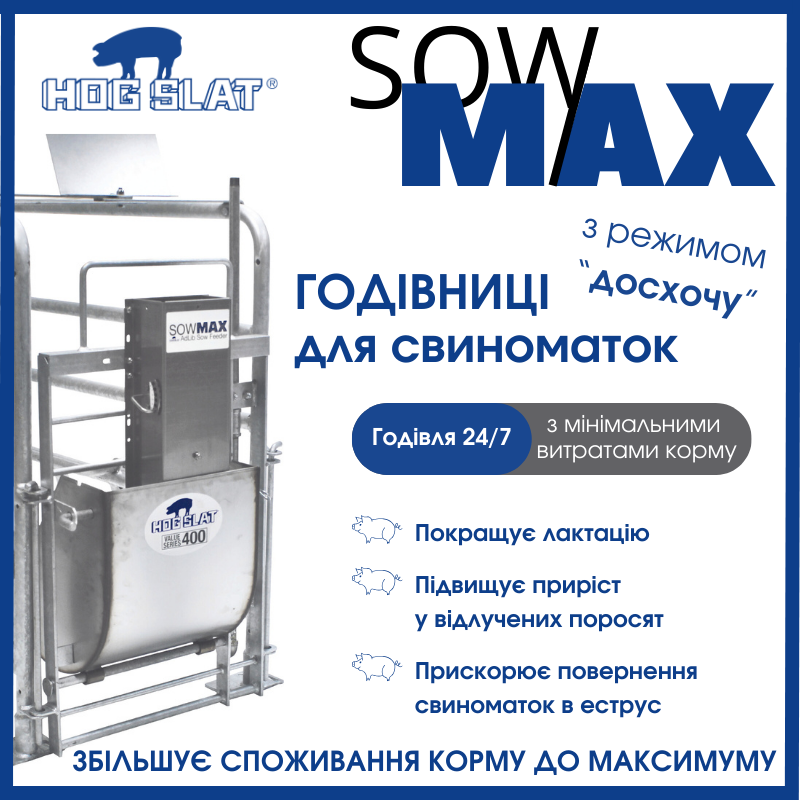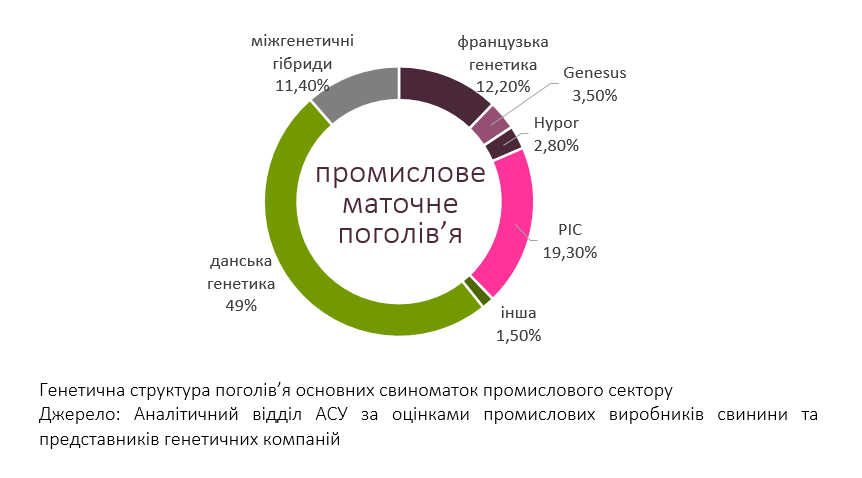Modern industrial pig production relies on foreign genetics, either imported directly or grown on Ukrainian nucleus farms in Ukraine. This has been proven by previous sections of the genetic structure of the industry, which were conducted by the AUPB in 2020 and 2021. Therefore, it is not an exaggeration to say that the use of high-quality and productive genetic resources remains one of the most important drivers of the industry's recovery and development. Therefore, the analytical department of the Association of Ukrainian Pig Breeders has updated the genetic profile of the domestic pig industry by interviewing market operators and major suppliers of genetic resources.
The results of this survey show that Danish genetics is the most common among industrial pig farms, accounting for about half of the population of the main industrial sows. It is used by a number of major operators as well as smaller market players. PIC genetics, which represent almost 20% of the breeding stock of the industrial pig industry, are also present on farms of all categories in terms of number of animals. The share of French genetics (Axiom and Choice) is currently over 12%. Dutch genetics Hypor retains its previously won 3% segment, and Genesus, which has been present on the Ukrainian market since 2020, is gradually increasing its presence - from 1% in 2021 to 3.5% in 2024. In addition, other genetic resources for pig farms, such as Ra-SeGenetics, TopigsNorsvin, and Austrian genetics, also maintain their market positions. Their combined share is about 1.5% of the total number of commercial sows at the beginning of the year.
"Although the distribution provides general guidelines for the genetic structure of the breeding stock, it is rather conditional. This is also due to the fact that it is difficult to accurately attribute the livestock of a number of market operators of different sizes to a particular genetics, as the use of intergenetic hybrids is quite common. For example, 11.4% of the breeding stock is the product of crossbreeding pigs from different suppliers. Thus, the crisis years of 2020 and 2021, as well as the unstable years since the beginning of the full-scale invasion, have created the preconditions for operators to choose the path of such experiments. However, most of them express their intention to switch to cleaner genetic lines over time," analysts of the industry association comment.



